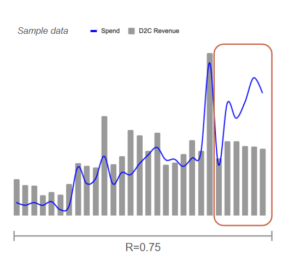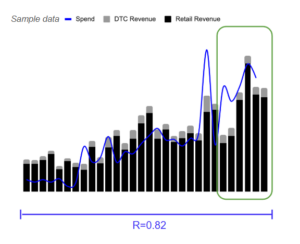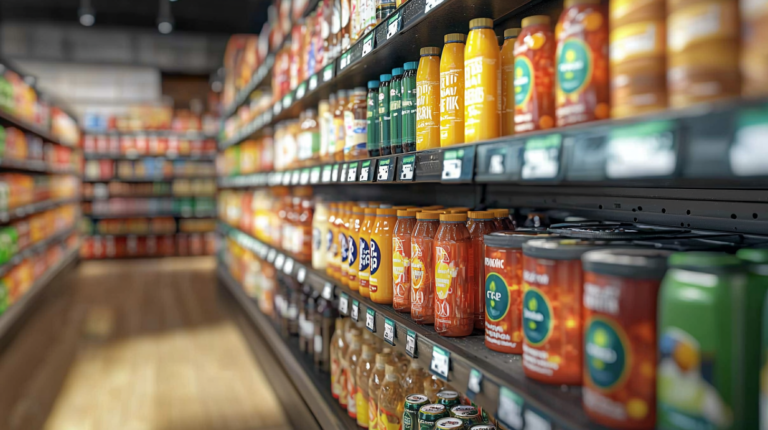Why Unrealistic Online Sales Expectations Are Holding Food Brands Back

Many food and beverage brands enter the brick-and-mortar space with high expectations to maintain direct-to-consumer (DTC) sales, only to find that their results don’t align with projections. The reality is that success in digital marketing requires a nuanced, omnichannel approach—one that considers the interplay between online and brick-and-mortar sales.
We spoke with Joy Commodore, Group Director of CPG at Power Digital, and Makenna Sekeres, Account Director at Power Digital, to gain their unique insights on how brands can recalibrate their strategies to maximize growth.
The Problem: Unrealistic Timelines and Isolated Metrics
As food and beverage brands invest more in digital advertising, a critical shift in mindset is needed, one that moves away from short-term expectations and siloed measurement approaches. Brands that focus on longer-term performance evaluation and omnichannel impact will be better positioned for success.
“Many brands are accustomed to seeing real-time data from their DTC platforms, and are eager to quickly see the impact of digital marketing on in-store sales,” Commodore explains. “The reality is, measuring the impact of marketing efforts typically requires at least 12 weeks just to establish a benchmark and baseline. To make informed decisions, brands need to allow campaigns to run their full course, analyze patterns over time, and resist the urge to draw conclusions too soon.
Additionally, many brands view online and in-store sales as separate entities rather than understanding their interconnected nature. Sekeres points out that “brands tend to hold their online sales to a higher standard than they should. When a company launches in major retailers like Target, Walmart, or Amazon, their DTC sales are likely to see a decline as the options to purchase have now been expanded. But instead of seeing this as a failure, they need to look at the full omnichannel picture.” The reality is that a well-executed retail launch often shifts consumer purchasing behavior, while direct-to-consumer sales may slow, retail sales typically grow as a result. Rather than judging channels in isolation, brands should assess total revenue impact and how digital campaigns influence retail velocity.
The DTC Fallacy: Understanding Cannibalization
When brands expand their retail presence, they often assume total revenue will increase in a linear fashion. However, this assumption fails to account for revenue cannibalization.


Instead of focusing on one channel’s performance in isolation, brands should measure overall business growth. Commodore adds, “Our goal at Power Digital is to ensure that, holistically, the brand is growing. Even if DTC revenue declines, we may see retail and Amazon sales climb. The question isn’t, ‘Did our online sales drop?’ but rather, ‘Is the total business growing as a result of our marketing efforts?’”
A Smarter Approach to Measurement
To combat unrealistic expectations, brands need to rethink how they measure success. Power Digital recommends matched market testing, brand lift studies, and using retail media data to understand how digital marketing drives both online and in-store sales.
“Matched market testing is a method we use for retail clients,” Sekeres explains. “This method helps us isolate the true impact of campaigns by comparing revenue and velocity performance in markets with and without digital advertising.”
Retail media networks are another key tool for bridging the online-to-offline gap. Platforms like Walmart Connect and Target’s Roundel are able to tap into bottom-of-funnel tactics, providing brands with real-time performance metrics that drive more targeted marketing efforts. As an experienced online marketing agency, Power Digital has developed specialized expertise to help brands leverage these tools and strategies for maximum impact.
The Path Forward: Holistic Growth Strategies
To avoid the pitfalls of unrealistic online sales expectations, food and beverage brands must shift their mindset toward an omnichannel strategy. Instead of fixating on DTC performance, they need to evaluate the full impact of their marketing efforts across all media channels.
Commodore emphasizes, “The brands that succeed are the ones that take a step back and look at the full landscape. They invest in the right measurement tools, embrace a longer timeline for results, and understand that omnichannel success is about balance, not just one metric.”
At Power Digital, we help food and beverage brands navigate these complexities by developing strategies that maximize growth across every channel. If you’re ready to take a smarter approach to marketing, contact Power Digital today to learn how we can help drive performance across all your sales channels.
Our Editorial Standards
Reviewed for Accuracy
Every piece is fact-checked for precision.
Up-to-Date Research
We reflect the latest trends and insights.
Credible References
Backed by trusted industry sources.
Actionable & Insight-Driven
Strategic takeaways for real results.


















